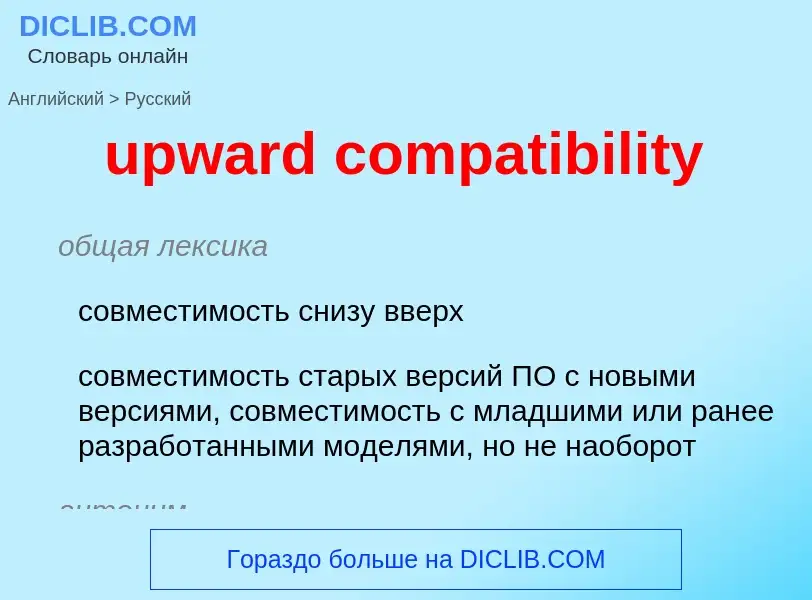Перевод и анализ слов искусственным интеллектом ChatGPT
На этой странице Вы можете получить подробный анализ слова или словосочетания, произведенный с помощью лучшей на сегодняшний день технологии искусственного интеллекта:
- как употребляется слово
- частота употребления
- используется оно чаще в устной или письменной речи
- варианты перевода слова
- примеры употребления (несколько фраз с переводом)
- этимология
upward compatibility - перевод на Английский
общая лексика
совместимость снизу вверх
совместимость старых версий ПО с новыми версиями, совместимость с младшими или ранее разработанными моделями, но не наоборот
антоним
общая лексика
совместимость снизу вверх
совместимость предыдущих версий системы с ее последующими версиями
антоним
общая лексика
аппаратная совместимость
предполагает либо возможность сопряжения (совместимость по разъёмам), либо взаимозаменяемость конструктивных узлов, блоков, плат и т.д.
Смотрите также
общая лексика
программная совместимость
способность компьютерной системы исполнять ПО, написанное для другой системы
Смотрите также
общая лексика
совместимость сверху вниз
совместимость новых версий ПО с предыдущими
антоним
Википедия
Forward compatibility or upward compatibility is a design characteristic that allows a system to accept input intended for a later version of itself. The concept can be applied to entire systems, electrical interfaces, telecommunication signals, data communication protocols, file formats, and programming languages. A standard supports forward compatibility if a product that complies with earlier versions can "gracefully" process input designed for later versions of the standard, ignoring new parts which it does not understand.
The objective for forward compatible technology is for old devices to recognise when data has been generated for new devices.
Forward compatibility for the older system usually means backward compatibility for the new system, i.e. the ability to process data from the old system; the new system usually has full compatibility with the older one, by being able to both process and generate data in the format of the older system.
Forward compatibility is not the same as extensibility. A forward compatible design can process at least some of the data from a future version of itself. An extensible design makes upgrading easy. An example of both design ideas can be found in web browsers. At any point in time, a current browser is forward compatible if it gracefully accepts a newer version of HTML. Whereas how easily the browser code can be upgraded to process the newer HTML determines how extensible it is.


